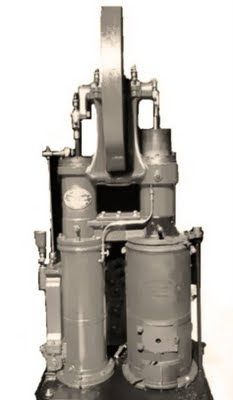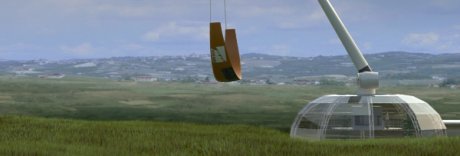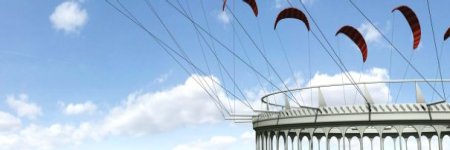bigmoose
1 MW
Folks,
I have always had a penchant for alternate energy since the early 70's. It may not show at times, because it has always been tempered by the "business case", that is it has to not only work out with respect to energy balance; but economically also.
because it has always been tempered by the "business case", that is it has to not only work out with respect to energy balance; but economically also.
Here is an article that makes a fair analysis on wind power turbine capability versus size:
http://www.theoildrum.com/node/6954
12 turbines were tested in the Netherlands with data provided. It took two to 47 small windmills to power a Dutch home... and an American home consumes 3X the power!
Very interesting facts... Cost 17% more; power 2000 % more. What a deal! I'll let you read the original article so that I don't quote too much.
The discussion gets pretty good also. The pro and con. Here is a graph, if it turns out that I thought was pretty interesting that I have not seen before. Manufacturer spec for output versus wind speed, versus measured performance.

Why my interest? I was involved with a few Gents two years ago who wanted to import small vertical axis German wind turbines into the USA. They were friends, and were not happy when I told them they were "nuts" and the economics won't work out for their customers. I shared with them that they might make a profitable business out of it; but I didn't want to be a part of it, because there would be no real ROI (Return on Investment) for their customers. We have stayed friends, and they did not initiate an investment to become involved...
I am still looking for the right "small" solution...
I have always had a penchant for alternate energy since the early 70's. It may not show at times,
Here is an article that makes a fair analysis on wind power turbine capability versus size:
http://www.theoildrum.com/node/6954
Two real-world tests performed in the Netherlands and in the UK confirm our earlier analysis that small wind turbines are a fundamentally flawed technology. Their financial payback time is much longer than their life expectancy, and in urban areas, some poorly placed wind turbines will not even deliver as much energy as needed to operate them (let alone energy needed to produce them). Given their long payback period relative to their life expectancy, most small wind turbines are net energy consumers rather than net energy producers.
12 turbines were tested in the Netherlands with data provided. It took two to 47 small windmills to power a Dutch home... and an American home consumes 3X the power!
Size matters
...snip...a large wind turbine with a rotor diameter of 18 meters delivers 143,000 kWh per year, or an average power output of 16,324 watts. It can power 42 Dutch households. This large wind turbine costs only slightly more than all small wind turbines combined (17 percent more, to be exact, or 190,000 euro), but it delivers almost 20 times as much energy.
Very interesting facts... Cost 17% more; power 2000 % more. What a deal! I'll let you read the original article so that I don't quote too much.
The discussion gets pretty good also. The pro and con. Here is a graph, if it turns out that I thought was pretty interesting that I have not seen before. Manufacturer spec for output versus wind speed, versus measured performance.

Why my interest? I was involved with a few Gents two years ago who wanted to import small vertical axis German wind turbines into the USA. They were friends, and were not happy when I told them they were "nuts" and the economics won't work out for their customers. I shared with them that they might make a profitable business out of it; but I didn't want to be a part of it, because there would be no real ROI (Return on Investment) for their customers. We have stayed friends, and they did not initiate an investment to become involved...
I am still looking for the right "small" solution...










